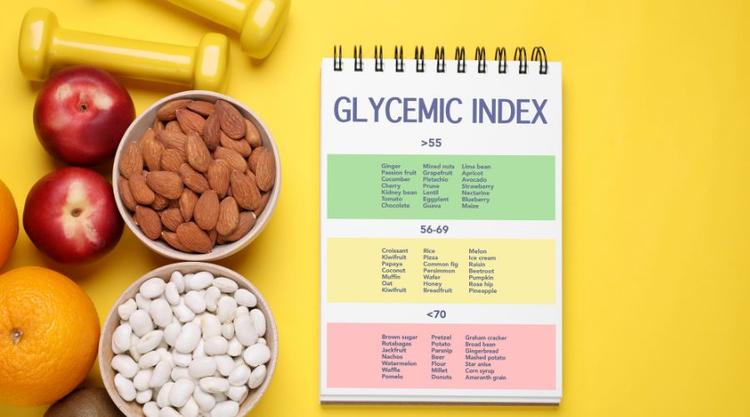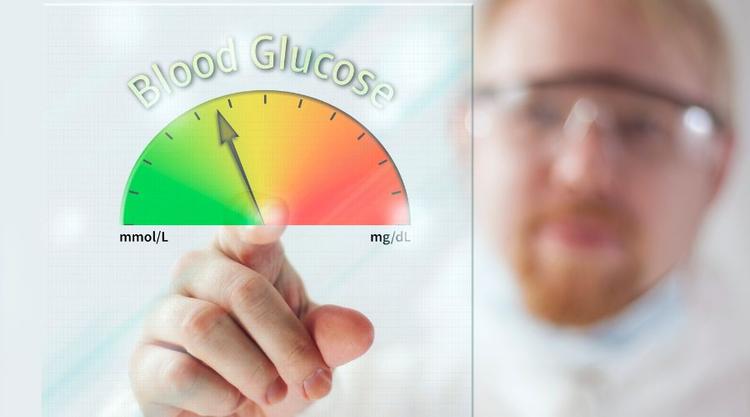WORLD DIABETES DAY 2022

Medically Reviewed By
Dr. Ragiinii Sharma
Written By Srujana Mohanty
on Oct 14, 2022
Last Edit Made By Srujana Mohanty
on Mar 15, 2024

Diabetes is one of the most common conditions nowadays, as more than 500 million people currently live with it globally. The International Diabetes Federation and WHO took a step forward to make people aware of the condition by observing 14th November as World Diabetes Day with the agenda of spreading awareness worldwide. It is necessary for everybody to know all about diabetes, its symptoms, types, normal sugar levels, etc., to stay aware and healthy.
World diabetes day - all about it
World diabetes day is celebrated every year on 14th November and was started in 1991. The reason behind celebrating the day on this date is because of the birthday of Sir Frederick Banting, who co-discovered insulin with Charles Best and John James Richard Macleod in 1922. Marking the birthdate of Sir Frederick Banting as world diabetes day, it focuses on diabetes mellitus and its types.
World diabetes day - the history
World diabetes day was established by IDF, i.e. the International Diabetes Foundation, and WHO i.s. World Health Organization in 1991. It is a response to growing concerns about the health issues posed because of it. The main aim is to make people aware of diabetes symptoms and types. The day was officially recognized by the UN in 2006 with the passage of a resolution of this effect. This day's significance is to learn about diabetes mellitus and partake actively in its treatment. However, the complications are less common and less severe, but it is vital to manage glucose levels. World diabetes day 2021 - 23 theme is ‘access to diabetes care - if not now, when?’ which displays a message about taking care and being aware of normal sugar levels. The theme of the day encourages the population to be mindful of the condition so that they can benefit from the same education along with its treatment, symptoms, risks, exercises, and dietary changes. The main goal is to make people aware of keeping both long-term and short-term glucose levels within the range.
World diabetes day - how to celebrate
The blue circle logo is a symbol of diabetes awareness, and to celebrate world diabetes day, you can wear a t-shirt, bracelet, or necklace with the logo, or you can also create one for yourself to spread awareness to others around you about diabetes mellitus effects and its long term consequences if left untreated. People can also organize a diabetes fair with the help of health officials who can sponsor the fair. You can offer diabetes screening and provide details on what to do to prevent type 1 diabetes and type 2 diabetes and stay healthy.
Diabetes Mellitus - a disorder
Diabetes mellitus, commonly known as diabetes or sugar, is a disorder in which the body doesn't7 produce enough or respond naturally to insulin, and that causes glucose levels to be abnormally high. In this condition, the amount of sugar in the blood is increased, and doctors term it as diabetes mellitus to keep it differentiated from diabetes insipidus; which is a rare disorder that affects blood glucose levels and also affects blood glucose levels further leads to increased urination. The condition occurs when your body cannot take up the sugar in its cells and use it for energy. This leads to a build-up of extra sugar in your bloodstream. When left untreated, the condition will lead to serious health issues causing damage to many body organs and tissues. It can damage the kidneys, heart, eyes, and nerves.
Insulin - all about it
Insulin is a hormone made by the pancreas, and it releases it into your bloodstream. Insulin acts as the key to unlocking the cell wall door that permits glucose to enter the body's cells. Glucose provides energy to organs and tissues to let them work properly. If a person has a high glucose level, then :
The pancreas will not make any insulin for the body.
A person's pancreas will make insulin, but the body cell does not respond to it and cannot use it normally.
And because the glucose cannot get into your body cells, it stays in the bloodstream and leads to high glucose levels.
Symptoms of diabetes include, but are not just limited to, excessive urination, tiredness, constant hunger, weight loss, and blurry vision. It is important to note that these are general symptoms that most people ignore or don’t pay much attention to. Thus, it is necessary to have a routine checkup to detect diabetes in time through early signs and symptoms. Diabetes is undiagnosed in about one in two adults. To create awareness about it World diabetes day is observed. If you are feeling any of the above symptoms you can also mark this day to get tested and be sure of your condition.
All about Diabetes types
Glucose is the form of sugar that is in your bloodstream and is one of the primary energy sources. Lack of insulin causes sugar to build up in your blood, and that leads to many health issues. Four types of diabetes are listed below:
1. Type 1 diabetes
Type 1 diabetes, also known as juvenile diabetes, is a chronic condition in which the pancreas makes little or no insulin; there are many factors that cause this condition, like genetics and some viruses. This type of diabetes generally appears during childhood or adolescence; however, it can also develop in adults. The main cause of the condition is unknown, but some possible causes can be genetics and exposure to viruses. It has no cure, and its treatment is only to manage the amount of sugar in the blood by using insulin, diet, and lifestyle to prevent the complications linked to it.
Symptoms of type 1 diabetes
Some type 1 diabetes symptoms are:
- Feeling more thirsty than normal
- Excess urination
- Bedwetting in kids
- Feeling more hungry than normal
- Unexplained weight loss
- Feeling irritated
- Feeling tired
- Blurry vision
Prevention and treatment of type 1 diabetes
Sadly there is no way to prevent type 1 diabetes, but the condition can be managed by doing regular checkups. Knowing about normal sugar levels can help you manage it early. A simple blood test will help diagnose diabetes, and the doctor will tell you that if you have type 1 diabetes, you may also be tested for autoantibodies. If you have this type of diabetes, then you h need to take insulin shots daily as it will be required to manage the glucose levels and give energy to your body. It is not possible to take insulin as a pill because the acid in the stomach will be destroyed before it can get into the bloodstream.
2. Type 2 diabetes
Type 2 diabetes is a common condition in which sugar level increases. It is a lifelong condition in which your blood sugar levels are too high; glucose is the sugar in the body that is the main source of energy and comes from the food you eat. Insulin is a hormone that helps get into the cells to give energy. If a person has diabetes, her body will not make enough insulin or even no insulin. The glucose then stays in the blood and does not go into the cells. With time this glucose which remains in the blood can cause health issues. The condition has many causes, like obesity, not being physically active, and genetics.
Symptoms of type 2 diabetes
Many people with type 2 diabetes have no symptoms as it develops slowly over the years; there are some early warning signs that you must keep in mind:
- Increased thirst
- Increased hunger
- Feeling tired
- Blurred vision
- Numbness in feet and hands
- Unexplained weight loss
Prevention and treatment of type 2 diabetes
You can follow some serious steps to prevent or delay type 2 diabetes. If you are overweight, you have to lose it by eating fewer calories and being more physically active. You can be more prone to the condition if you are overweight, and you must manage that first. Treatment of the disease involves managing glucose levels. People must follow a healthy eating plan or can have an anti-diabetic diet to manage it well. According to your condition, the doctor will prescribe you medicine for diabetes, including oral medicine, insulin, and many other injectable medicines if needed. To manage your blood sugar, it is necessary to check it on a regular basis, and also you have to keep your blood pressure and cholesterol levels normal to reach normal sugar levels.
3. Prediabetes
It is a type of diabetes stage before type 2 diabetes, which means that you have a higher-than-normal blood sugar level. It is not much higher to consider as type 2 diabetes, but it is a step towards this condition. If you have this condition, you can have a long range of diabetes in your heart, blood vessels, and kidneys. It is considered the starting point for type 2 diabetes. Thus it is necessary to take care of it and manage it well. The exact cause of this type of diabetes is unknown, and genetics and family history can contribute to it. People with this condition do not process glucose properly.
Symptoms of prediabetes
This type of diabetes doesn't have any signs or symptoms; however,, one possible sign can be darkened skin or certain parts of the body. The most affected areas that can be darkened are the neck, armpits, and groin. Some symptoms are;
- Increased thirst
- Fatigue
- frequent urination, especially at night
- Increased hunger
- Blurred vision
- Frequent infections
- Weight loss
- Slow healing of sores
Prevention and treatment of pre-diabetics
The condition can be prevented by doing healthy lifestyle changes. With these changes, the condition can be managed, and progression can be stopped to type 2 diabetes if it runs in your family. You must eat healthy foods, get active, lose excess weight, and control blood pressure and cholesterol. The condition can be treated or reversed with diet and exercise; it depends upon how high your sugar levels are and when it was diagnosed. Sometimes, your doctor can prescribe a medicine to get your normal sugar level back.
4. Gestational diabetes
This type of diabetes is diagnosed for the first time during pregnancy, and like all other types, it also affects how cells use glucose. The condition causes high blood sugar, affecting your pregnancy and your baby's health. The condition is not common as there are only a few women who develop high blood sugar during pregnancy, and if left untreated, it can cause health problems to both mother and baby. Developing gestational diabetes during pregnancy does not mean that you have the condition before you were pregnant; it usually appears because of the pregnancy and is due to hormonal changes and the way the body converts food into energy. When you are pregnant, hormones can interfere with the way insulin works, and thus it can lead to the condition.
Symptoms of gestational diabetes
The condition generally does not cause any signs or symptoms, but some women can have some warning signs :
- Frequent urination
- thirst
- Nausea
- Tiredness
Prevention and treatment of gestational diabetes
You can reduce the occurrence of gestational diabetes during pregnancy by staying healthy before and during pregnancy. Always try to eat a balanced diet and do regular exercise. The treatment of the conditions aims to keep normal sugar levels. It can be done by including special meal plans or by following a proper exercise routine. In some cases,, it may also be done by including daily blood glucose testing and insulin injections too.
FAQs
1. What are the normal sugar levels?
Fasting normal blood sugar is Normal for a person without diabetes:( 70–99 mg/dl)
Normal blood sugar 2 hours after meals is Normal for a person without diabetes:( Less than 140 mg/dl).
2. How to prevent diabetes mellitus?
Diabetes can be prevented but requires physical efforts and consuming and maintaining a well-balanced and healthy diet. The diet should have low-fat content and also a few calories.
3. What are the complications of diabetes mellitus?
If left untreated, diabetes mellitus can affect a person's kidney, heart, eyes, and nerves. It can also increase the chances of ischemic heart disease, peripheral artery disease, etc.
4. How is diabetes diagnosed?
The condition can be diagnosed by urine analysis, blood tests, and screening. The doctor will check your insulin levels and will start your treatment accordingly.
5. What is the primary cause of high sugar levels?
However, there are many things that contribute to the condition, but your diet plays a vital and direct role in enhancing your normal sugar levels.
6. What is diebetic ketoacidosis?
It is also known as DKA and is a serious medical condition that leads to very high levels of ketones in the blood.
7. Can prediabetes be reversed?
Yes, it is possible to reverse the condition permanently by doing some dietary changes. Keep in mind to have a low-carb diet lifelong to keep it reversed for life long.
Conclusion
There is no cure for diabetes, and it requires lifelong management. But regular body checkups to monitor and adhere to treatment can help you avoid more serious complications. It is necessary to consult your doctor if you experience any of the symptoms mentioned above, as if the condition is left untreated, it can have many adverse effects on health. With proper treatment, the condition can be managed well and also can be reversed by getting normal sugar levels.



